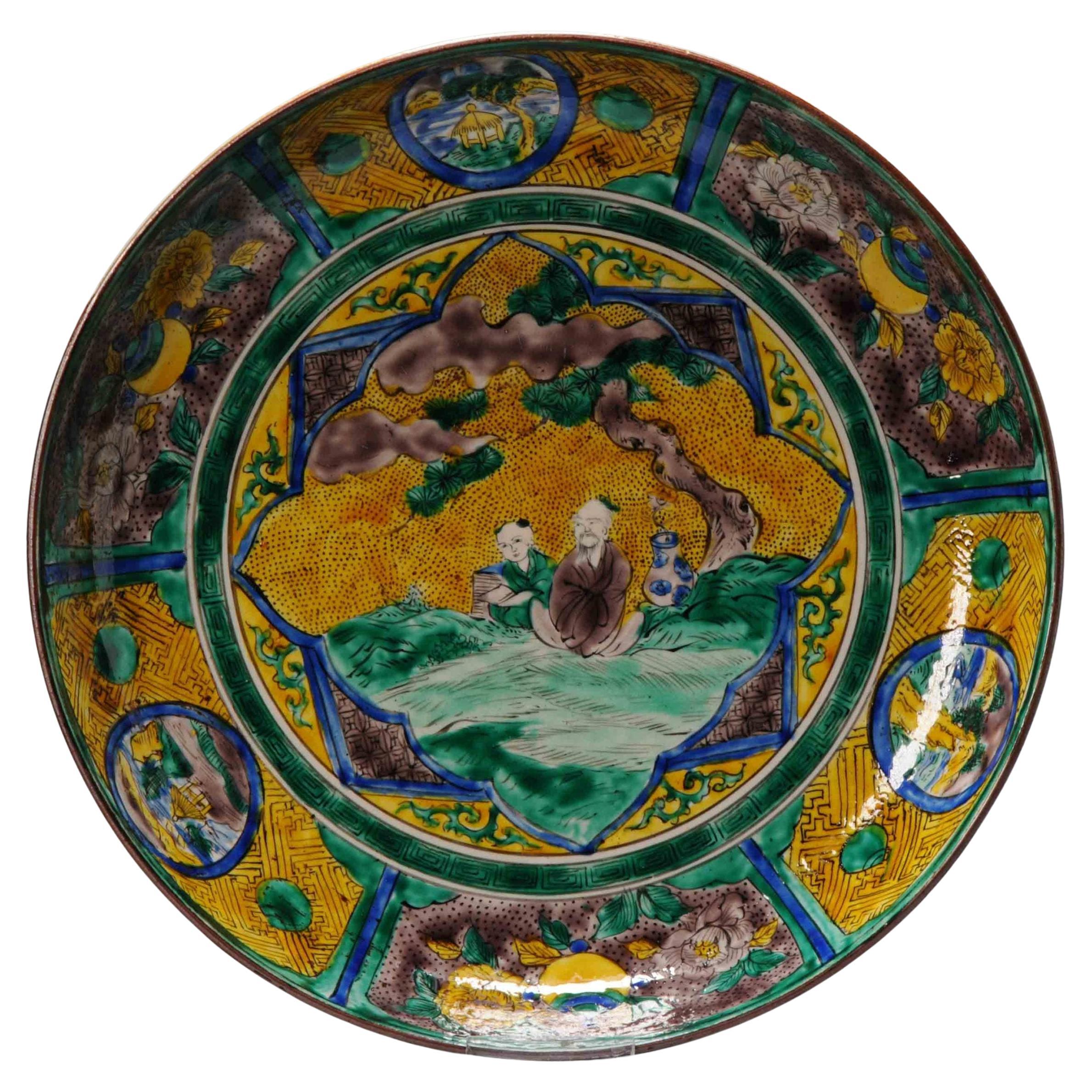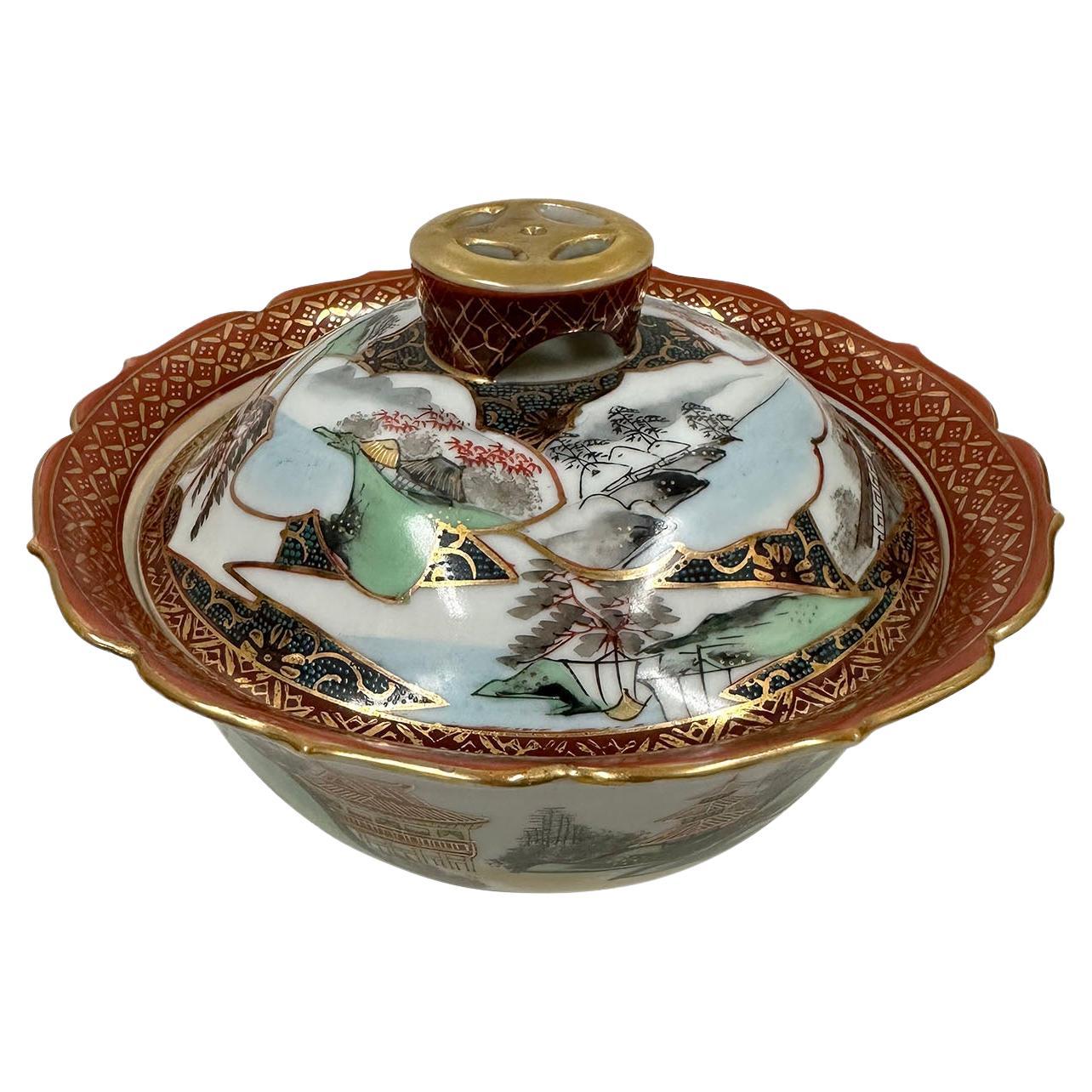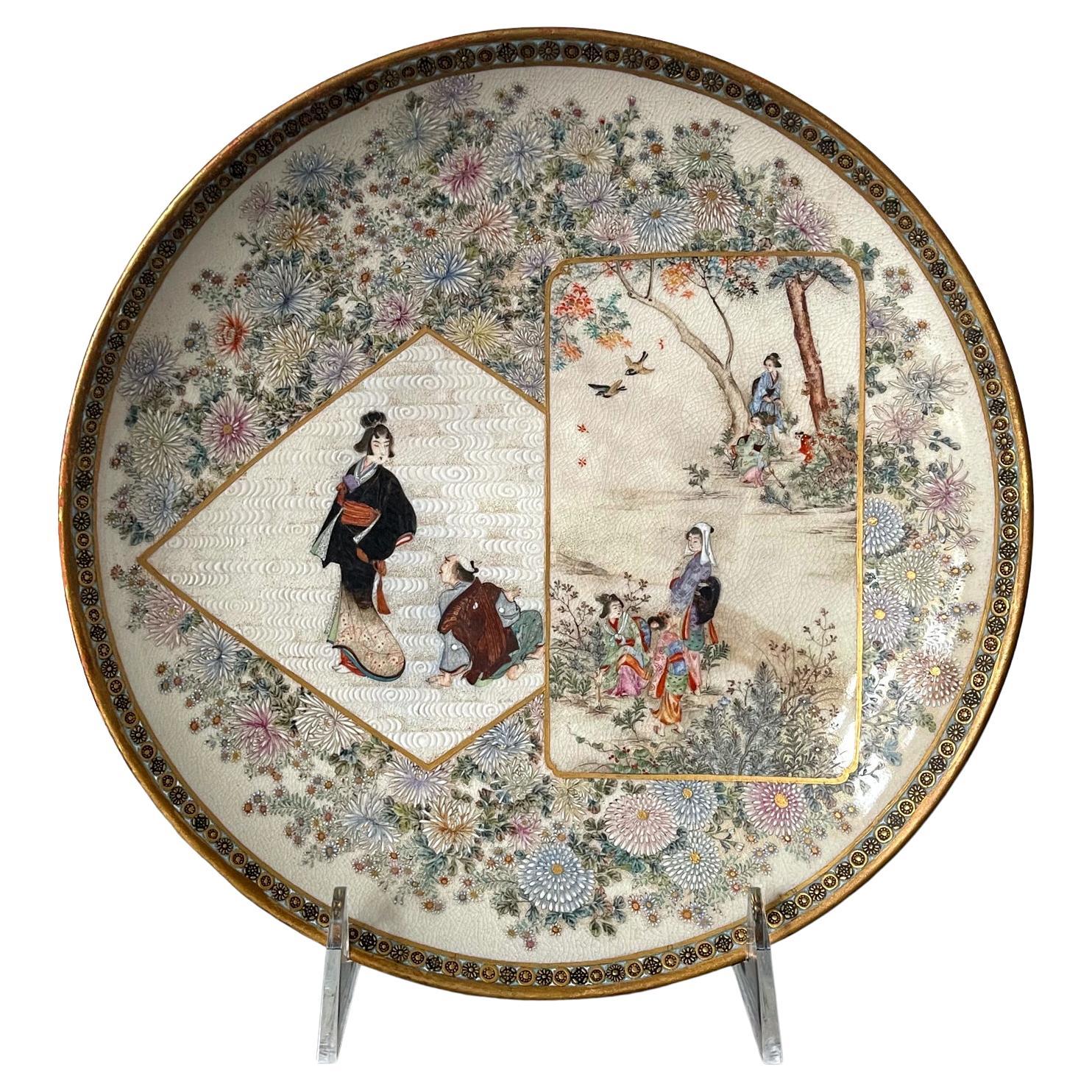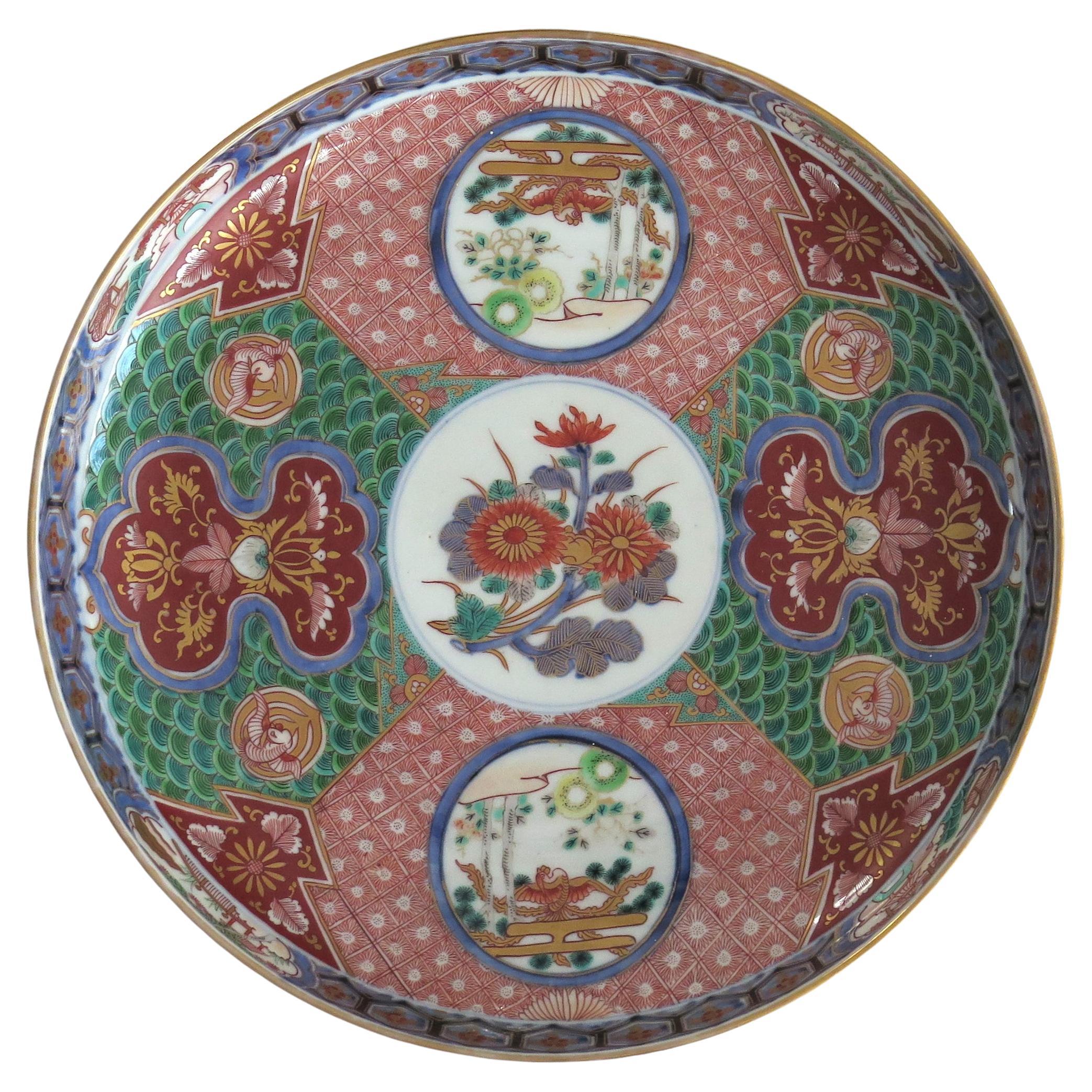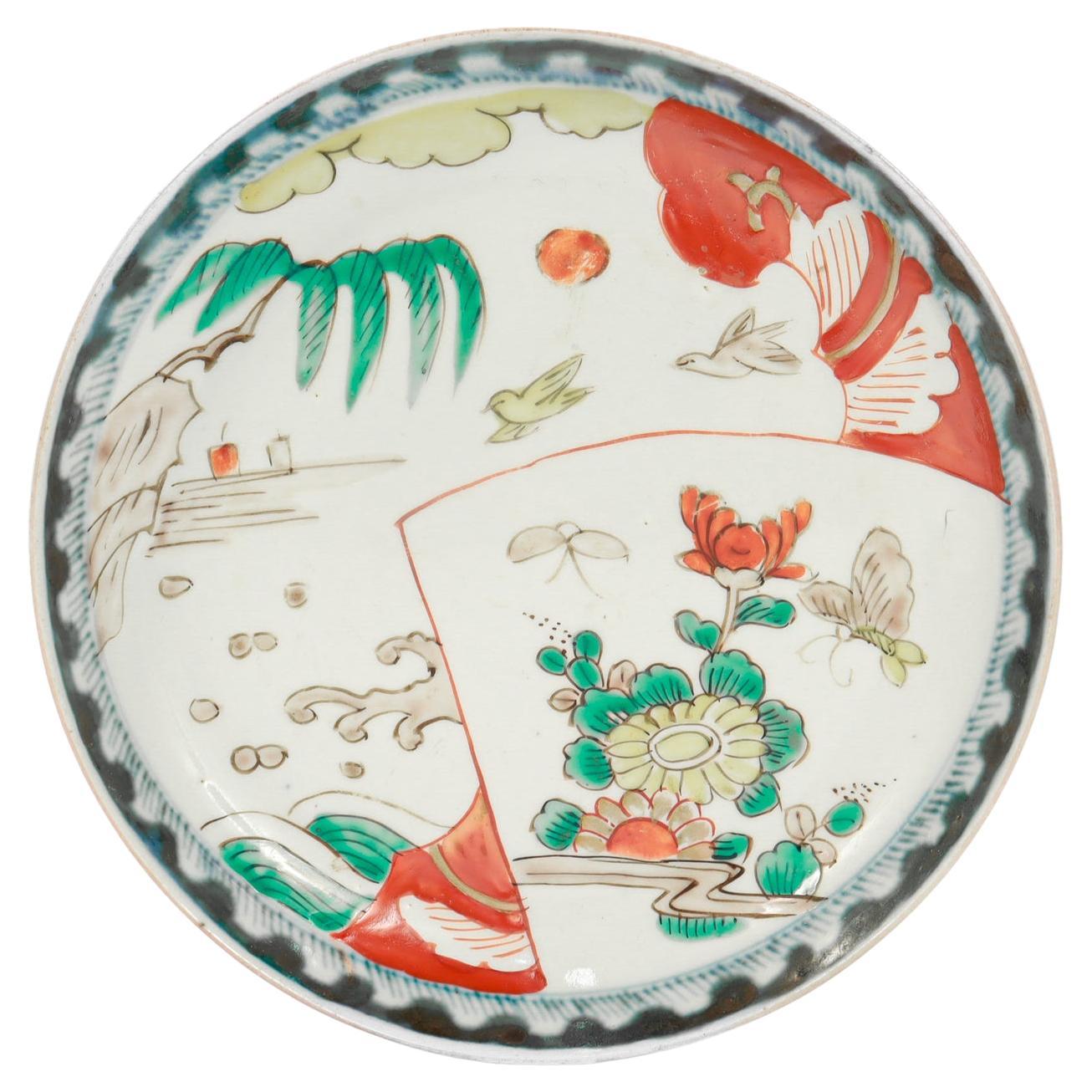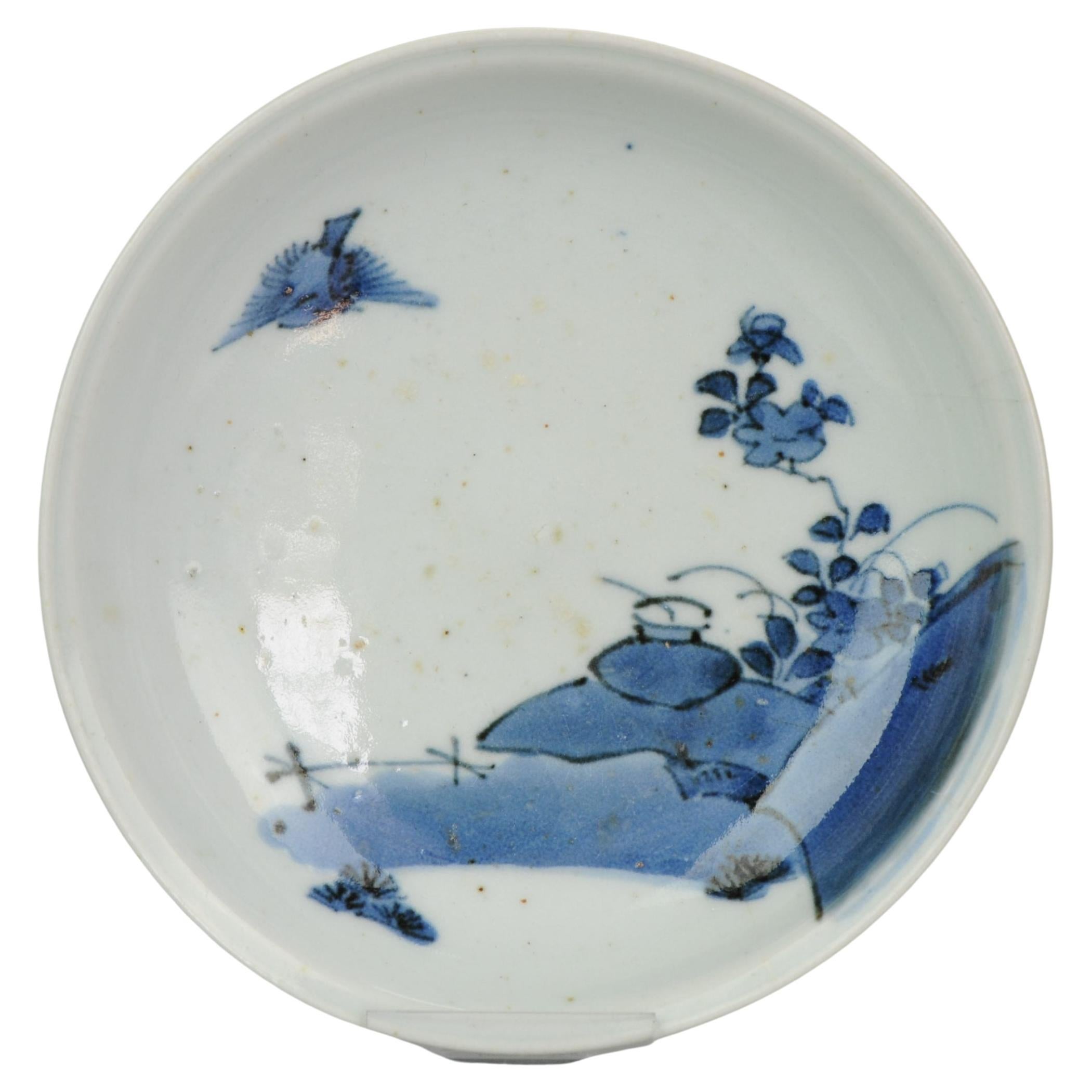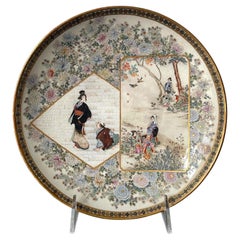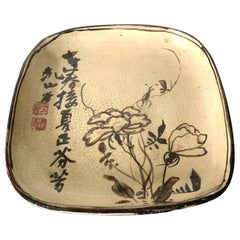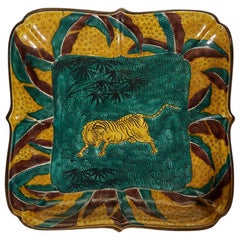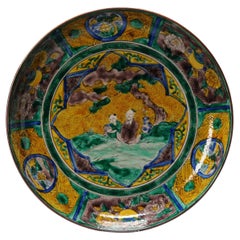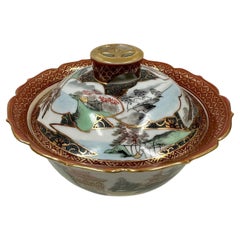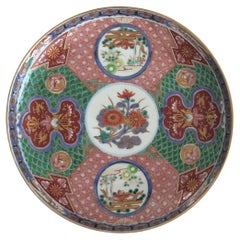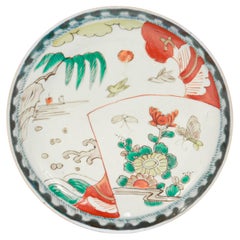Items Similar to Antique Japanese Ceramic Ko-Kutani Revival Footed Dish
Want more images or videos?
Request additional images or videos from the seller
1 of 19
Antique Japanese Ceramic Ko-Kutani Revival Footed Dish
$4,500
£3,414.50
€3,904.17
CA$6,285.28
A$6,988.38
CHF 3,648.94
MX$85,065.55
NOK 46,558.94
SEK 43,623.50
DKK 29,137.55
Shipping
Retrieving quote...The 1stDibs Promise:
Authenticity Guarantee,
Money-Back Guarantee,
24-Hour Cancellation
About the Item
A Japanese glazed ceramic footed dish made in the Ko-Kutani type of Edo period but likely during Kutani revival in the 19th century Meiji Period. The dish with delicate foliaged rim is raised on a circular foot with cutout design. The piece is decorated with tri-color underglaze paint in yellow, green and purple. In the center, a songbird is depicted perched on the rocks, surrounded with leafed vines with well painted tendrils. The outer surrounding band is divided into eight parts and alternately decorated with green sayagata pattern (linked-swastika) and yellow lined-diamonds with cross in the center. The foot features a piratically interesting cutout leaf design. The underside of the dish is decorated with three scrolling floral motifs and marked with a green Fuku seal in the center within a circular indentation.
The origin of the Kutani ware can be traced to early Edo period (mid 17th century). The production thrived for a short period of time from 1655 to early 1700s before it disappeared. It was not until 19th century during Meiji period that Kutani ware was revived by specific kilns, and later transformed into the new more garish styles and widely exported to the west. This dish appears to be a Meiji revival piece to closely mimic the early Ko-Kutani piece for domestic collectors instead of export.
For a Ko-Kutani footed dish with a very similar design, see illustration 49-50 on page 51 of "Kutani Ware" by Sansaku Nakagawa (the page is shown in the last picture).
- Dimensions:Height: 2.2 in (5.59 cm)Diameter: 8.6 in (21.85 cm)
- Style:Japonisme (Of the Period)
- Materials and Techniques:Ceramic,Glazed
- Place of Origin:
- Period:
- Date of Manufacture:19th century
- Condition:Wear consistent with age and use. Three glaze drippings and overburn imperfection. General wear and even glaze crackles as expected.
- Seller Location:Atlanta, GA
- Reference Number:1stDibs: LU945029546002
About the Seller
4.9
Platinum Seller
Premium sellers with a 4.7+ rating and 24-hour response times
Established in 2006
1stDibs seller since 2010
564 sales on 1stDibs
Typical response time: <1 hour
- ShippingRetrieving quote...Shipping from: Atlanta, GA
- Return Policy
Authenticity Guarantee
In the unlikely event there’s an issue with an item’s authenticity, contact us within 1 year for a full refund. DetailsMoney-Back Guarantee
If your item is not as described, is damaged in transit, or does not arrive, contact us within 7 days for a full refund. Details24-Hour Cancellation
You have a 24-hour grace period in which to reconsider your purchase, with no questions asked.Vetted Professional Sellers
Our world-class sellers must adhere to strict standards for service and quality, maintaining the integrity of our listings.Price-Match Guarantee
If you find that a seller listed the same item for a lower price elsewhere, we’ll match it.Trusted Global Delivery
Our best-in-class carrier network provides specialized shipping options worldwide, including custom delivery.More From This Seller
View AllJapanese Satsuma Ceramic Dish with Fine Decoration by Kinkozan
By Kinkozan
Located in Atlanta, GA
A satsuma ceramic dish made by Kinkozan studio circa 1980-1900s in the late Meiji Period. The dish with a thick robust wall is supported by a large ring base and features finely deta...
Category
Antique Late 19th Century Japanese Meiji Ceramics
Materials
Ceramic
Japanese Ceramic Dish Meiji Ogata Kenzan
Located in Atlanta, GA
A Japanese ceramic shallow dish in square form with rounded corners from Meiji period in the style of Ogata Kenzan. The dish features a cream color crackl...
Category
Antique 19th Century Japanese Meiji Ceramics
Materials
Ceramic
Rare Japanese Ceramic Glazed Bowl Makuzu Kozan Meiji Period
By Makuzu Kozan
Located in Atlanta, GA
On offer is a rare ceramic bowl with overglazed design by the famed Japanese ceramic artist Makuzu Kozan (1842-1916), circa 1906-1916. The bowl is rather unusual from the potter's repertoire with its unique glaze colors and decoration, and it likely belonged to a small series that Kozan made in and after 1906. A bowl of similar glaze and nearly identical dragon motif was recorded as a diplomatic present to the British royalty Arthur Connaught (1883-1932) when he represented King Gorge V in Japan in 1906. Other pieces, such as this bowl, were likely made with similar materials and designs afterwards.
Essentially round in form, the bowl has a generous volume with six harmonious lobes. The bottom of the interior showcases a coiled dragon in red, green and gold slithering on a cobalt blue background. The roundel shares an echoing lobed perimeter, which is further outlined by red and turquois bands and rising sun design. The exterior of the bowl features six stylized Japanese camellias...
Category
Antique Early 1900s Japanese Japonisme Ceramics
Materials
Ceramic
Japanese Yoshidaya Saiko Kutani Ceramic Dish
By Yoshidaya
Located in Atlanta, GA
A Japanese Ao-Kutani stoneware dish with overglaze decoration in the shape of barbed quatrefoil shape from late Edo period, circa early mid-19th century. Around 1804, 100 years after Ko-Kutani (old-Kutani) ware disappeared abruptly after thriving from 1655-early 1700s, saiko-kutani (revived-kutani) was attempted by many kilns and several distinguished styles developed. Among them, Yoshidaya kiln attempted to revive the original style of Ko-Kutani known as Aote, which employed four dark colors: green, yellow, dark blue/black and aubergine to create bold and striking design. The Yoshidaya production was short-lived and lasted roughly from 1823-1831. This dish is likely dated from this period or shortly after. The overglaze design centered around a crouching tiger under a black bamboo grove in a deep green background, surrounded by luxuriant banana leaves in green and aubergine with black outlines. The base of a similar concentric barbed quatrefoil design is further decorated with black foliage outlines and marked with a square Fuku mark.
For a Yoshidaya dish with identical shape but different landscape decoration, see lot 79 of sale 6547 Christie's London. Important Japanese and Chinese Art...
Category
Antique 19th Century Japanese Japonisme Ceramics
Materials
Ceramic
Fine Japanese Ceramic Plate by Kinkozan for Yamanaka & Co.
By Kinkozan
Located in Atlanta, GA
A fine Japanese ceramic satsuma plate made by Kinkozan and retailed by Yamanaka & Co. circa 1900-20s (late Meiji to early Tasho Period). The cream-color...
Category
Early 20th Century Japanese Meiji Ceramics
Materials
Ceramic
Japanese Ceramic Bowl Makuzu Kozan Utusushi Kenzan
By Makuzu Kozan
Located in Atlanta, GA
A rare ceramic bowl with overglaze paint decoration by Japanese imperial potter Makuzu Kozan ((1842–1916). Unlike the better-known works Kozan made for the expositions in the west and export to the foreign market, this piece exemplifies his work for the domestic market and the tea ceremony. The bowl was made in the so called "Utusushi" Ogata Kenzan (1663-1743), a celebrated Edo painter and ceramicist. Utusushi is loosely translated as "in the spirit of". It is not at all a simple imitation of a master, but a Japanese concept of embracing the spiritual essence of a master while the creator is free to mix in his or her own unique artistic interpretation and flavor.
The bowl was made to hold fruits during the tea ceremony. It has a very distinguished form with a circular lower body morphing into a square upper portion that further opening with flared rim. The surface has a grey glaze onto which Asagao flowers (Japanese morning glory) on the vines were painted in a free and poetic style. White was used for the petals, green for the leaves with touches of gold highlight. Asagao, the symbol of the summer was rendered in the spirit of Ogata Kenzan, and interestingly the shape of the blossom echoes the unique form the bowl. It was likely reserved for the tea ceremony during the summer months.
Under the base, Kozan was signed in black on a white porcelain plaque inlay.
For two similar examples of Kozan's work Utusushi Kenzan, see Page 168-169 of the book: Sekai ni Aisa Reta ya Kimono Miyagawa Kozan Makuzu...
Category
Antique Early 1900s Japanese Japonisme Ceramics
Materials
Ceramic
You May Also Like
Antique 19th Century Japanese Porcelain Yoshidaya Kutani Large Dish, Japan
Located in Amsterdam, Noord Holland
Sharing with you this lovely and unusal Kutani porcelain large dish. The dish is of circular form and has a scene of a wise man and his apprentice in a landscape scene. With beautiful colors and very nicely painted.
Base marked with a Fuku mark...
Category
Antique 19th Century Japanese Qing Ceramics
Materials
Porcelain
$4,700 Sale Price
20% Off
Vintage Japanese Kutani Lidded Porcelain Bowl
Located in Pomona, CA
This beautiful Japanese Kutani porcelain bowl is hand made in about 1950s with hand painted picture of landscape, temple, etc highlighted with gold plated on the edge of the bowl a...
Category
Mid-20th Century Japanese Anglo-Japanese Decorative Bowls
Materials
Porcelain
Japanese Large porcelain Dish Imari-Arita Hand Painted signed Edo Period Ca 1810
By Arita
Located in Lincoln, Lincolnshire
This is a very beautiful example of a Japanese, Arita- Imari porcelain large Dish or Platter with finely hand painted decoration, dating to the Edo period circa 1810.
This dish is v...
Category
Antique Early 19th Century Japanese Edo Ceramics
Materials
Ceramic
Antique Japanese Imari Porcelain Plate or Dish
Located in Philadelphia, PA
A fine antique Japanese (or Chinese) porcelain plate.
With a white ground decorated with an ocean landscape scene along with flowers and birds in tones of green, red, yellow, and br...
Category
Early 20th Century Japanese Meiji Ceramics
Materials
Porcelain
Ca 17th C Japanese Ko-Imari Porcelain Edo Period Dish Antique Japan
Located in Amsterdam, Noord Holland
Description
Sharing with you a very nice example of the Edo period with a gentle scene of a bird in flight looking down on a garden scene with what seems to be a pot.
Condition...
Category
Antique 17th Century Japanese Ceramics
Materials
Porcelain
$1,149 Sale Price
20% Off
Kutani Edo Period 18th/19th Century Japanese Porcelain Dish Arita
Located in Amsterdam, Noord Holland
Description
A very nice set of polychrome dishes with green and blue overglaze colors. Interesting decoration
Box included.
Condition
Both with crackle lines and some ename...
Category
Antique 19th Century Japanese Edo Ceramics
Materials
Porcelain
$861 Sale Price
20% Off
More Ways To Browse
Kiln Japanese
Antique Green Glazed Ceramics
Antique Japanese Seals
Green Ceramic Dish
Japanese Export 19th
Antique Kutani
Kutani Meiji
Edo Period Scroll
Pirate Furniture
Pirate Antique
Japanese Kutani Ware
Kutani Ware
Kutani Dish
Japanese Kutani Dish
Ko Kutani
Chinese Famille Rose 20th Century
Japanese Porcelain Charger
Antique Chinese Celadon
